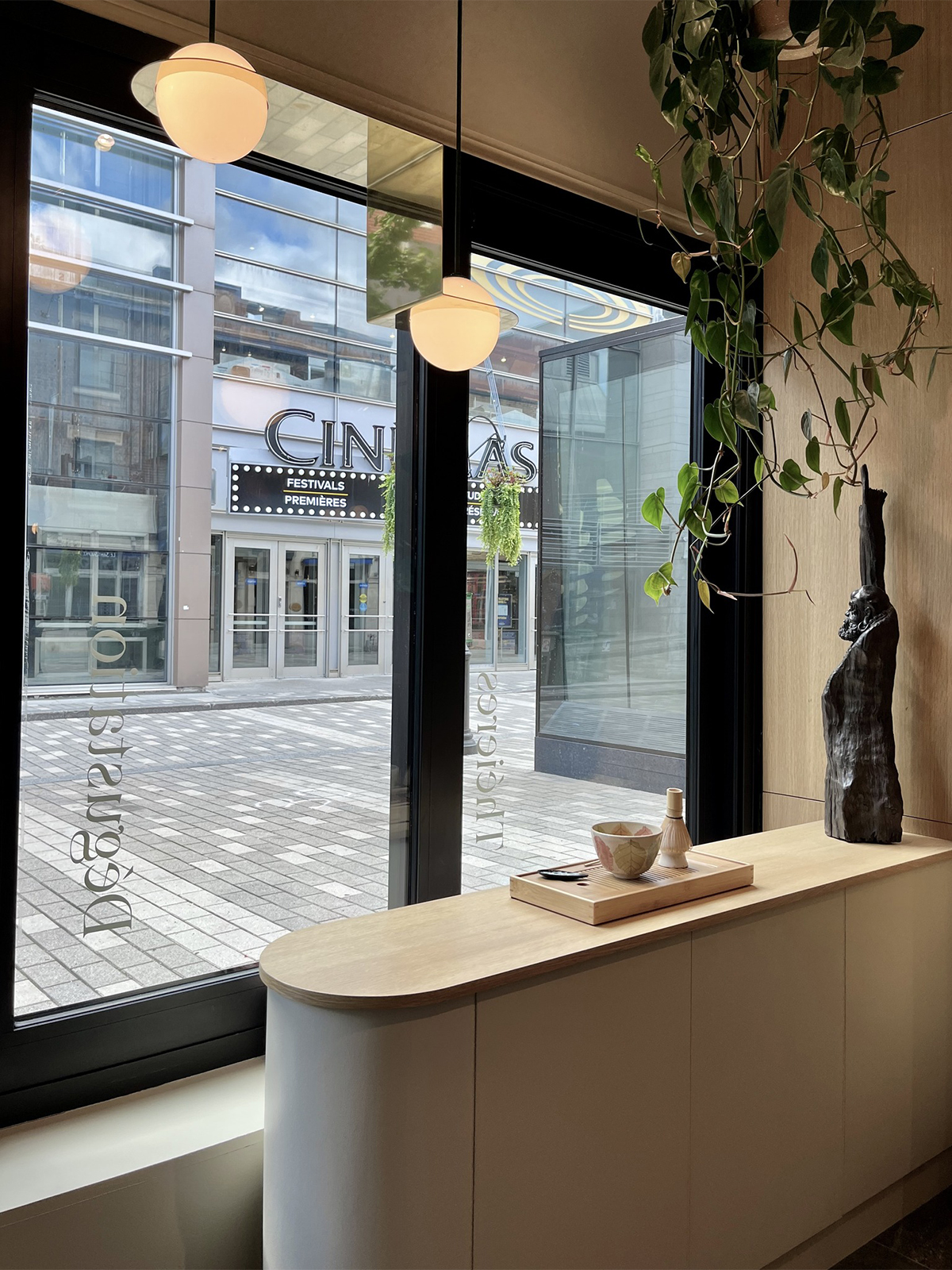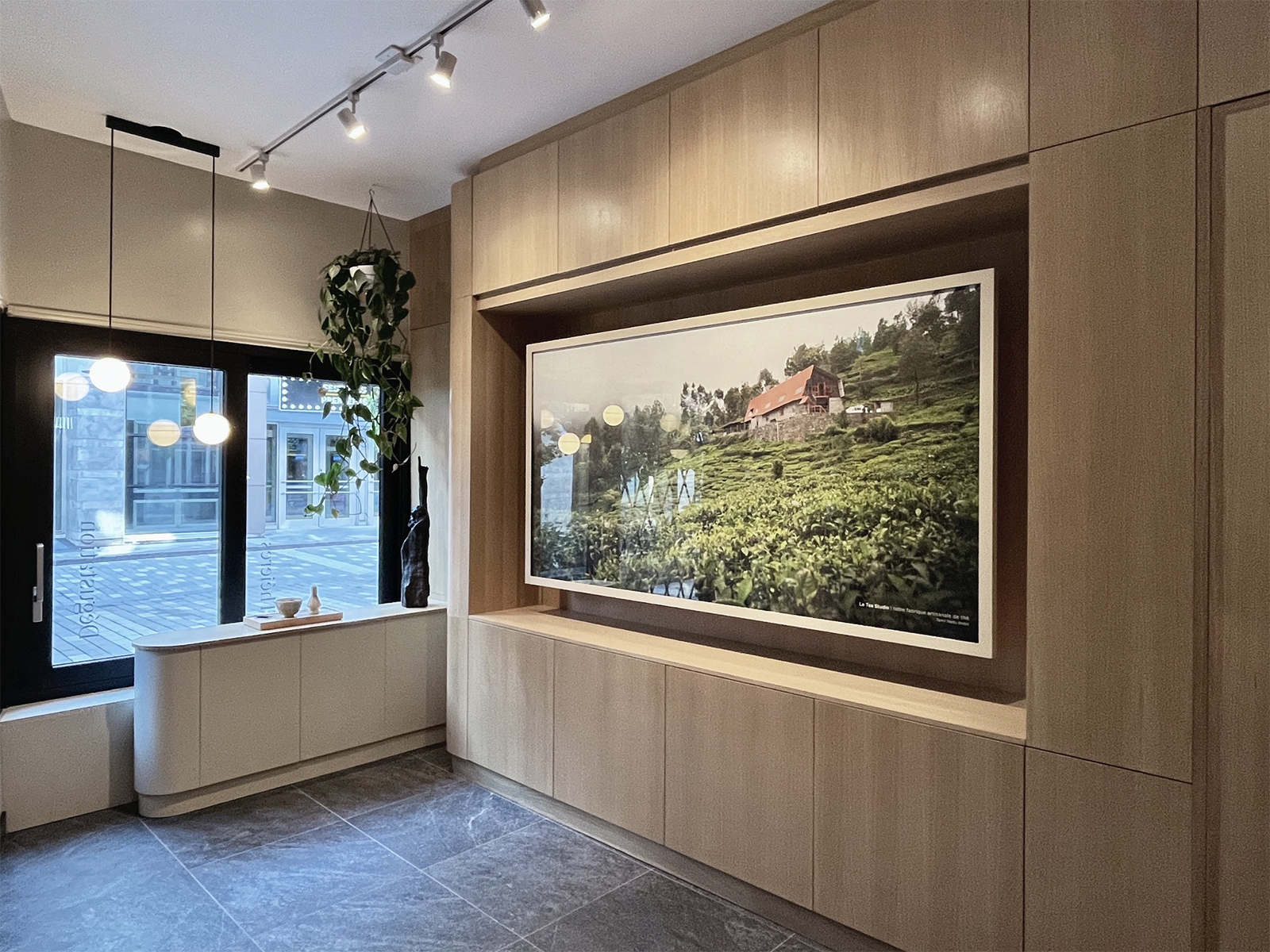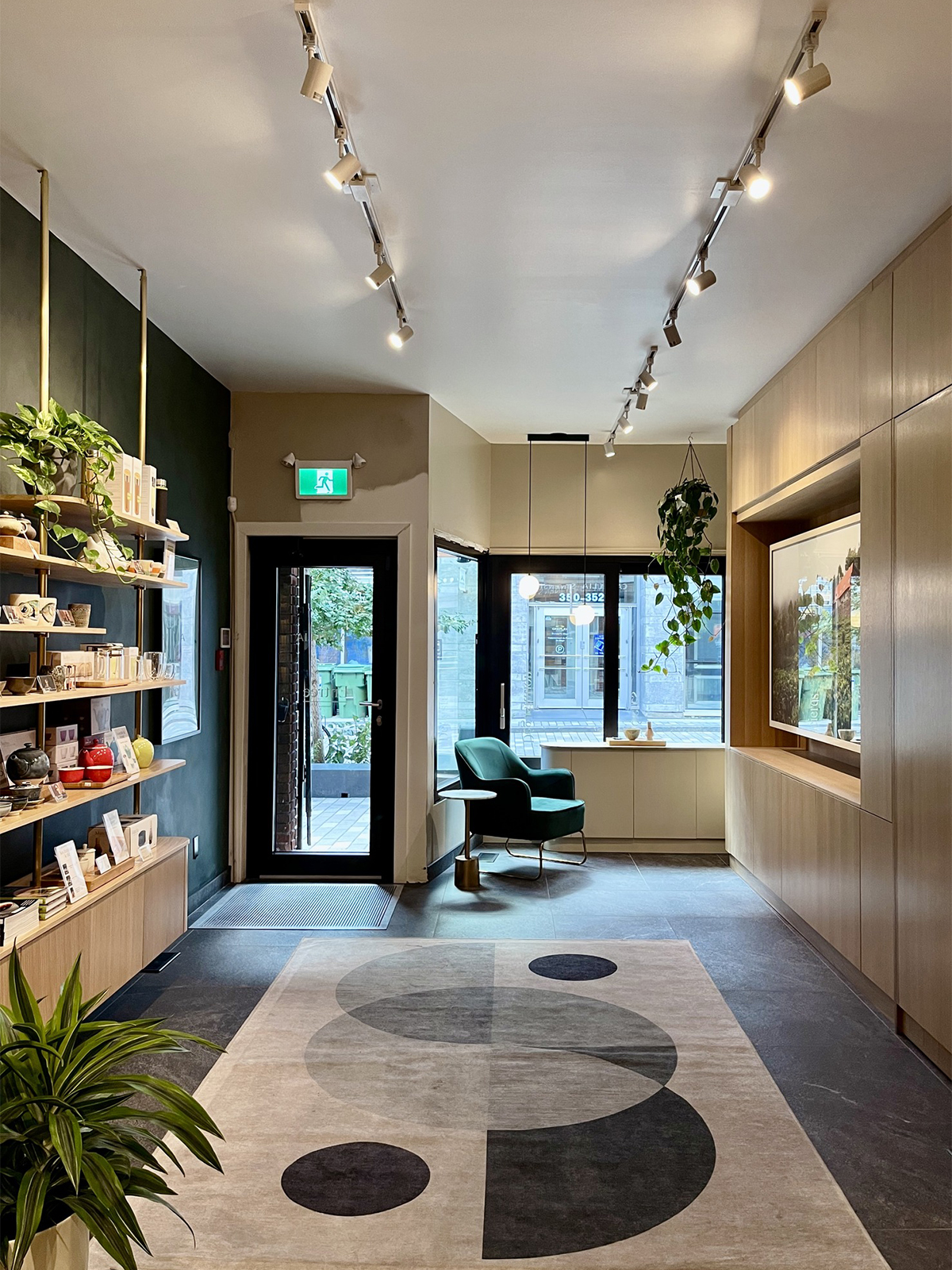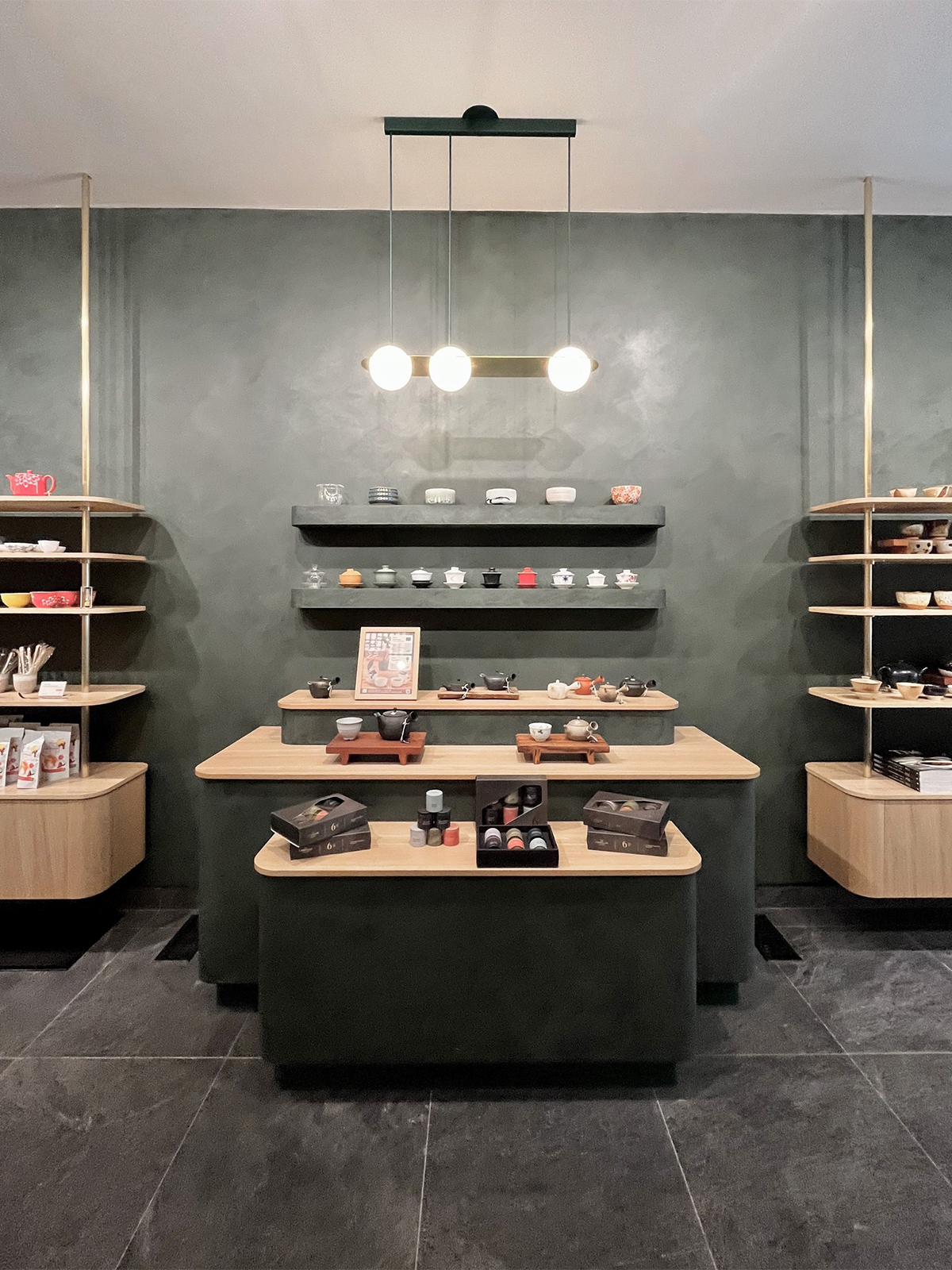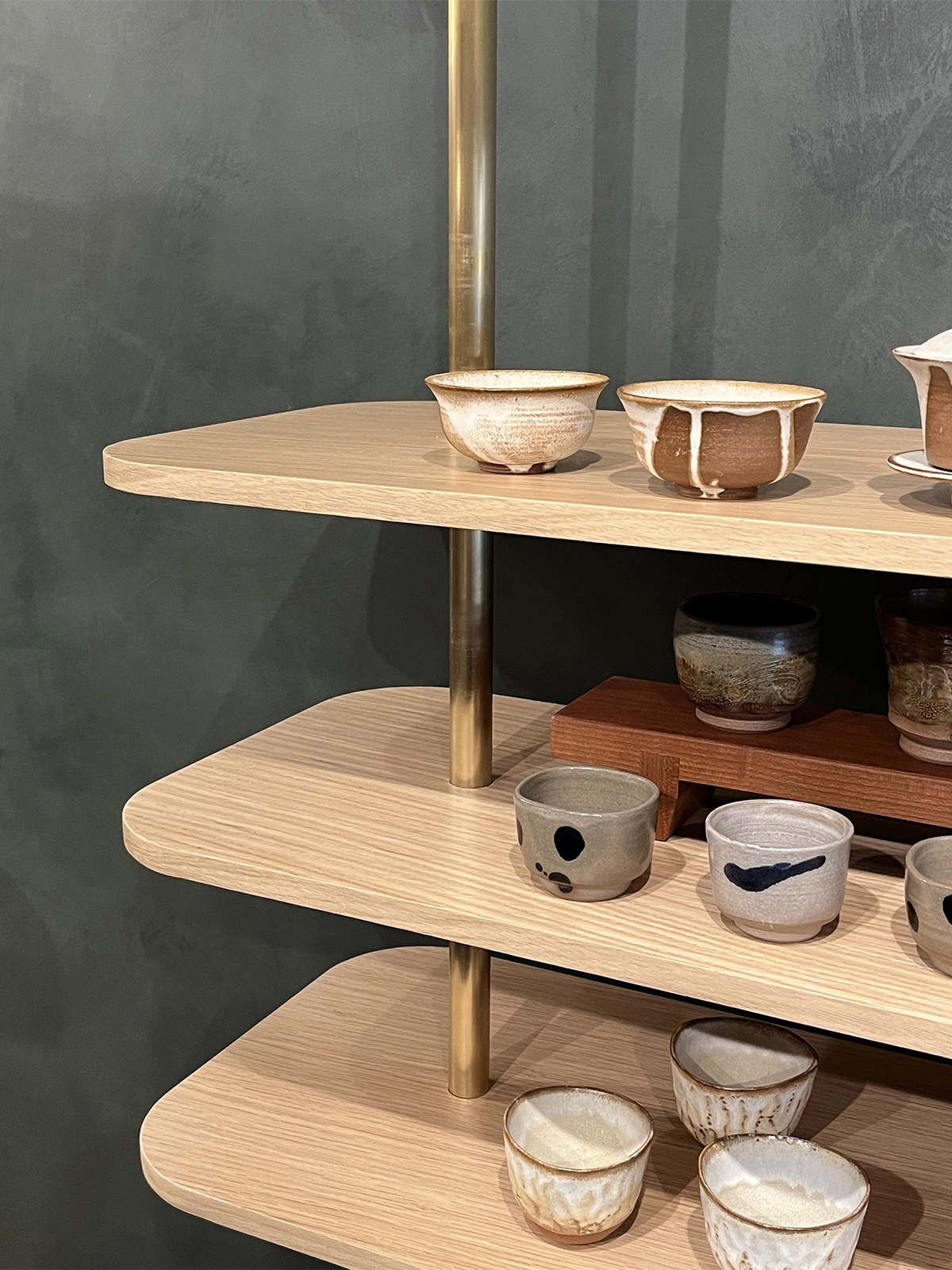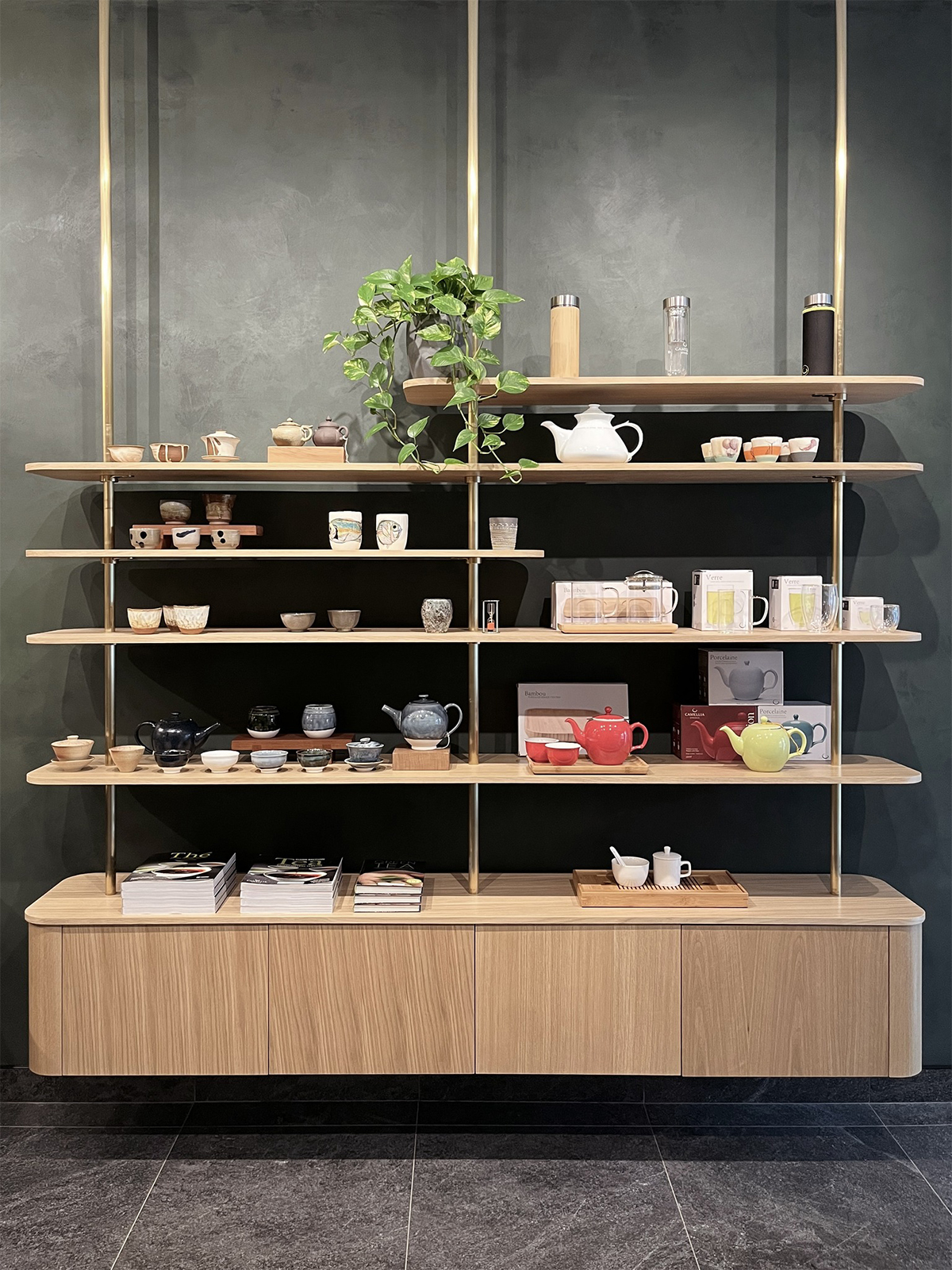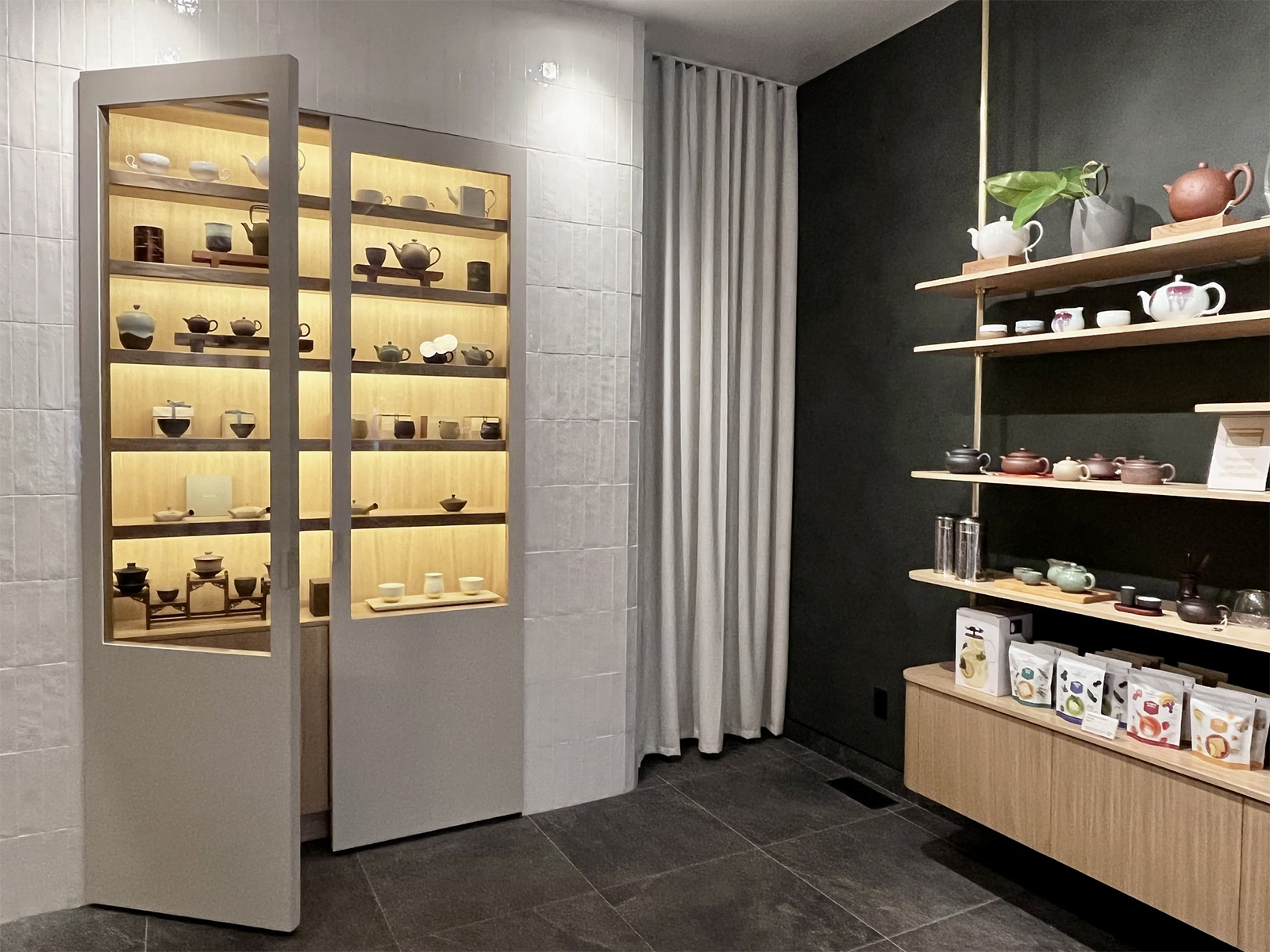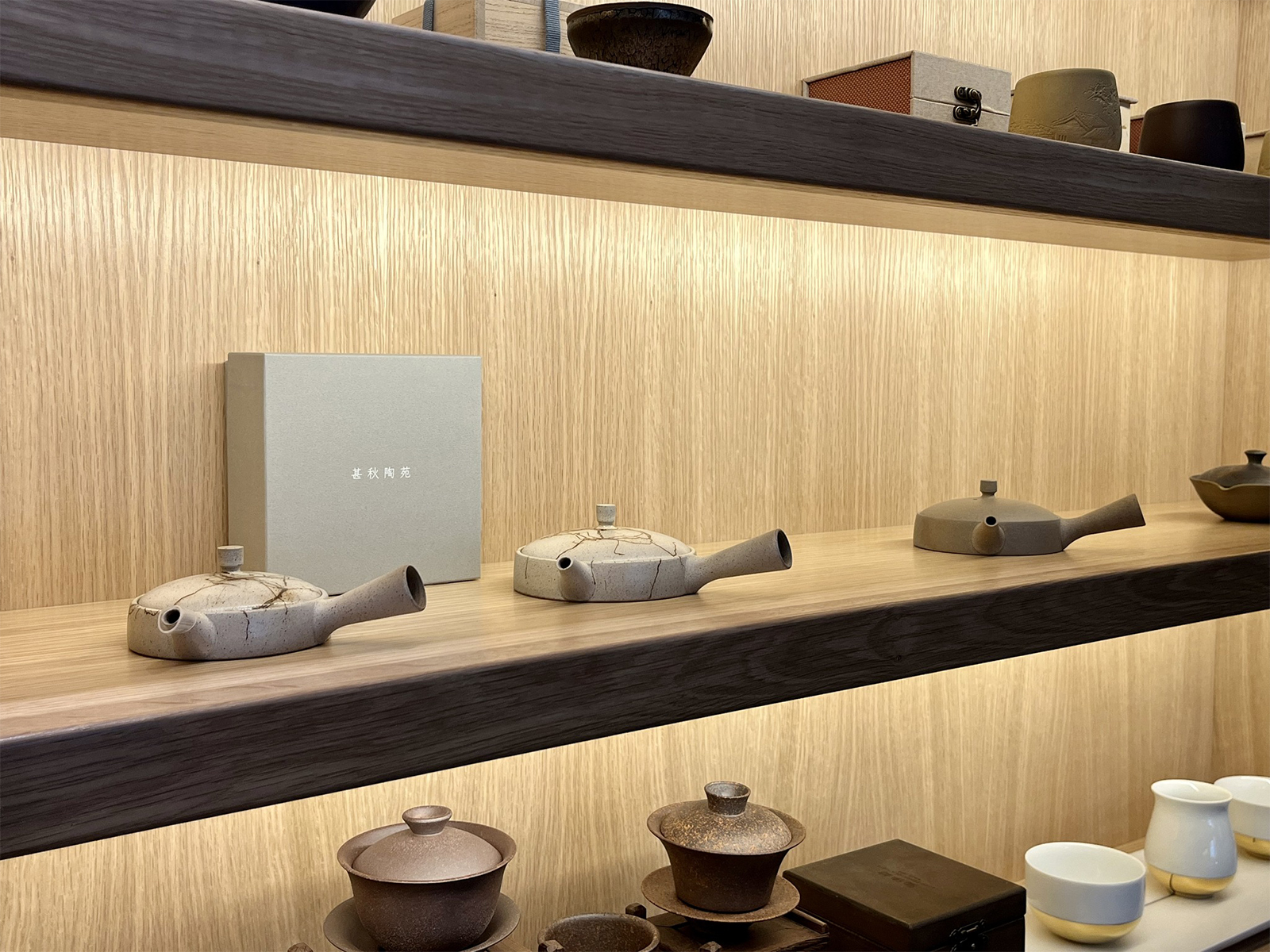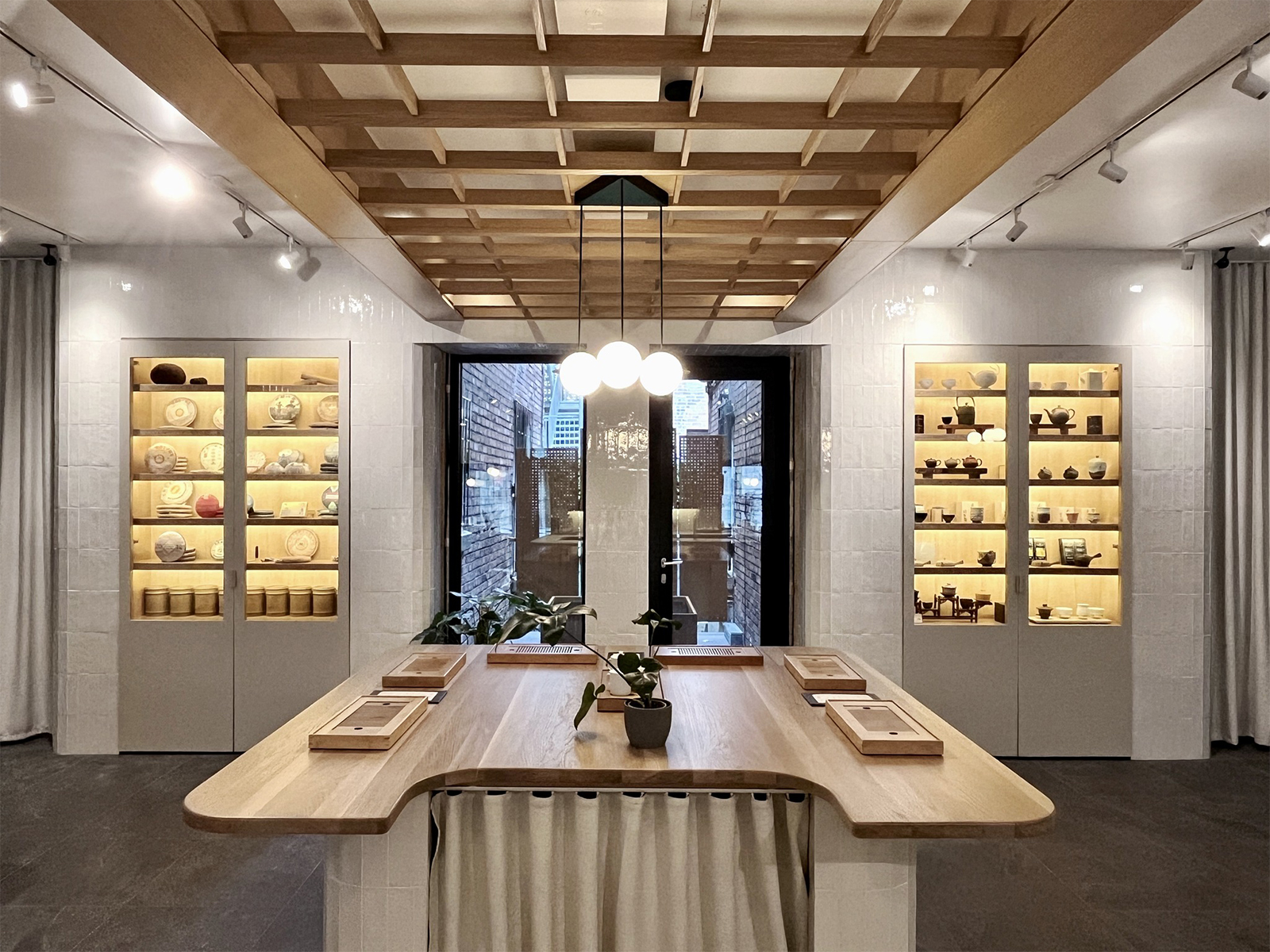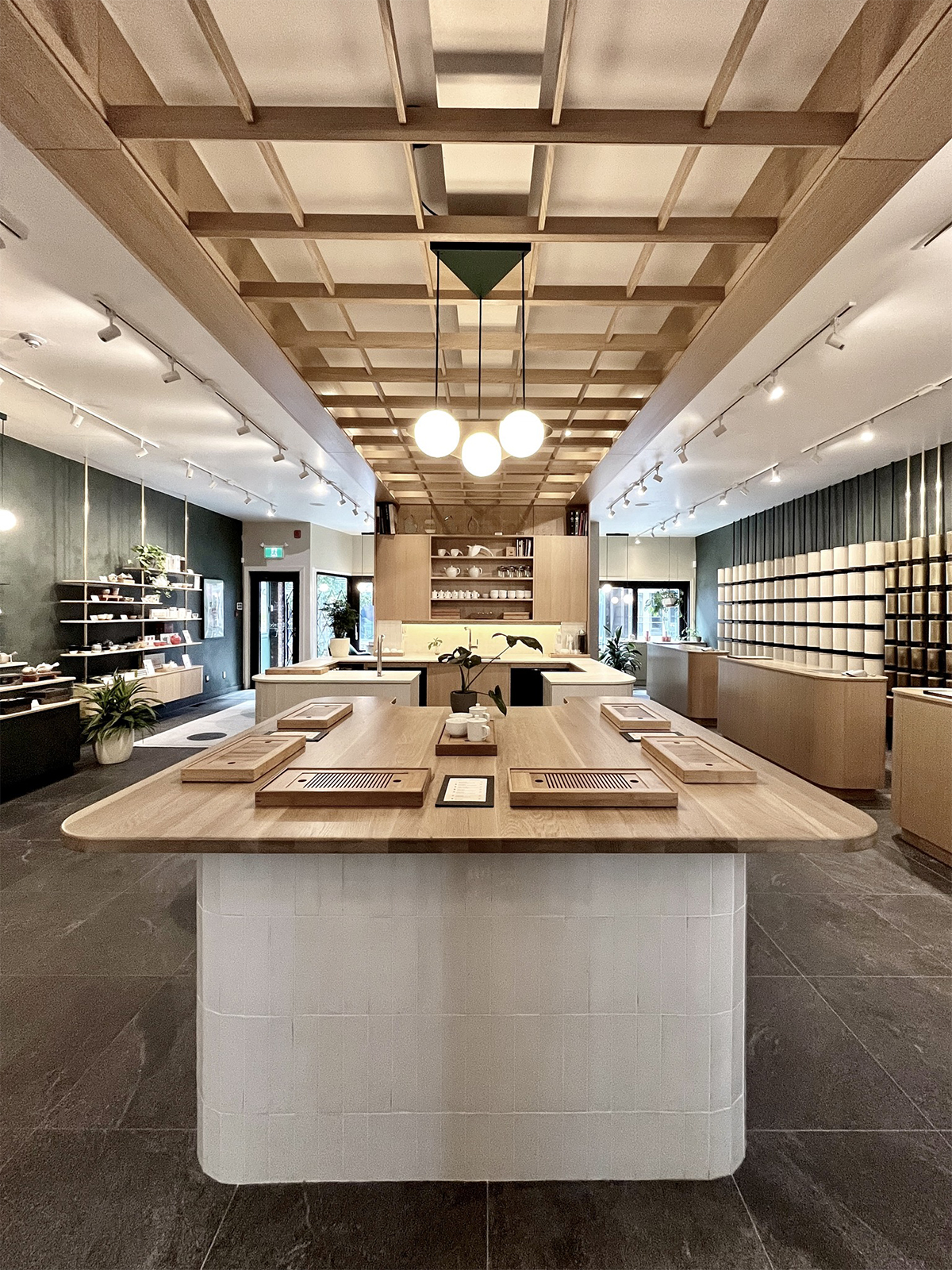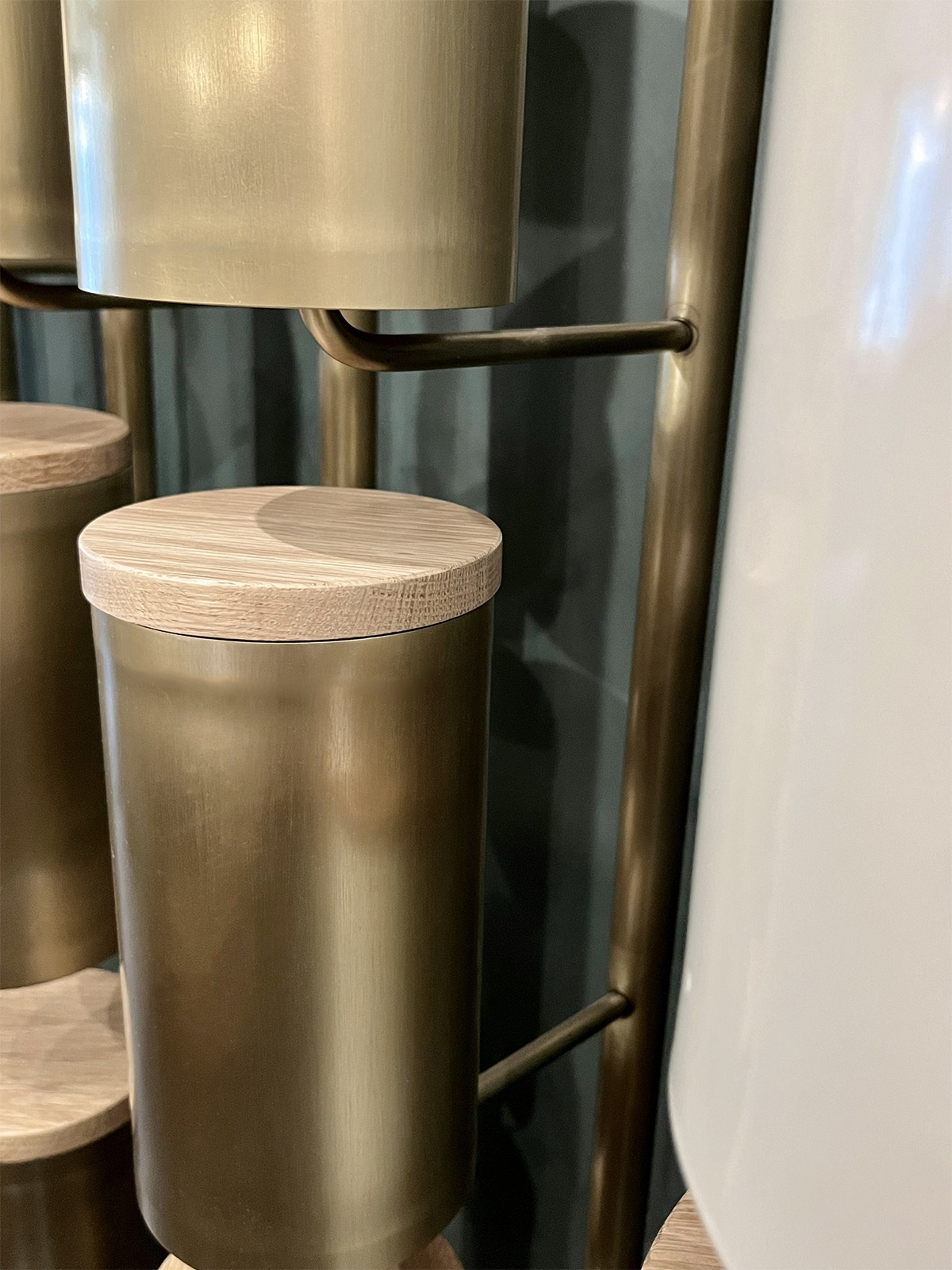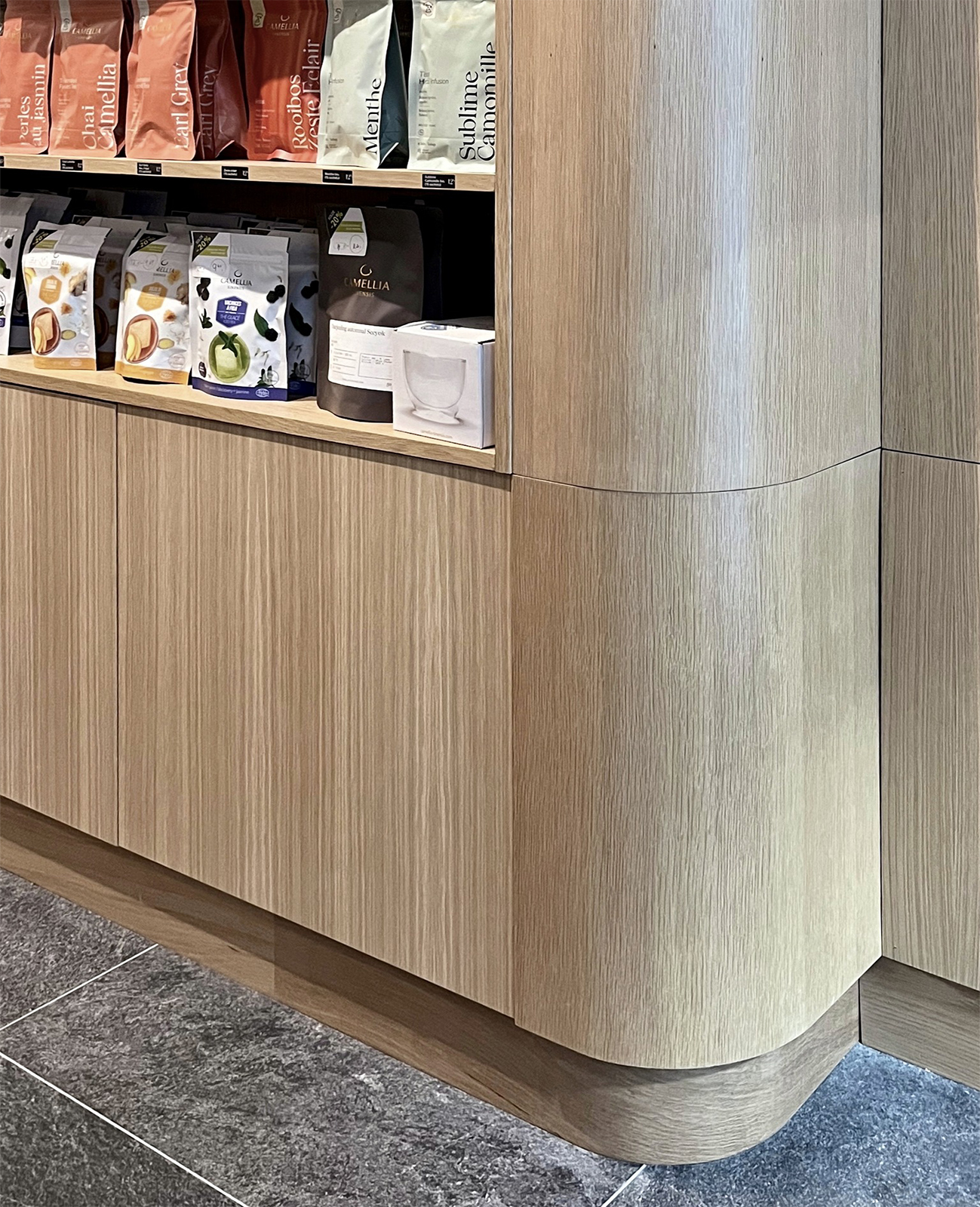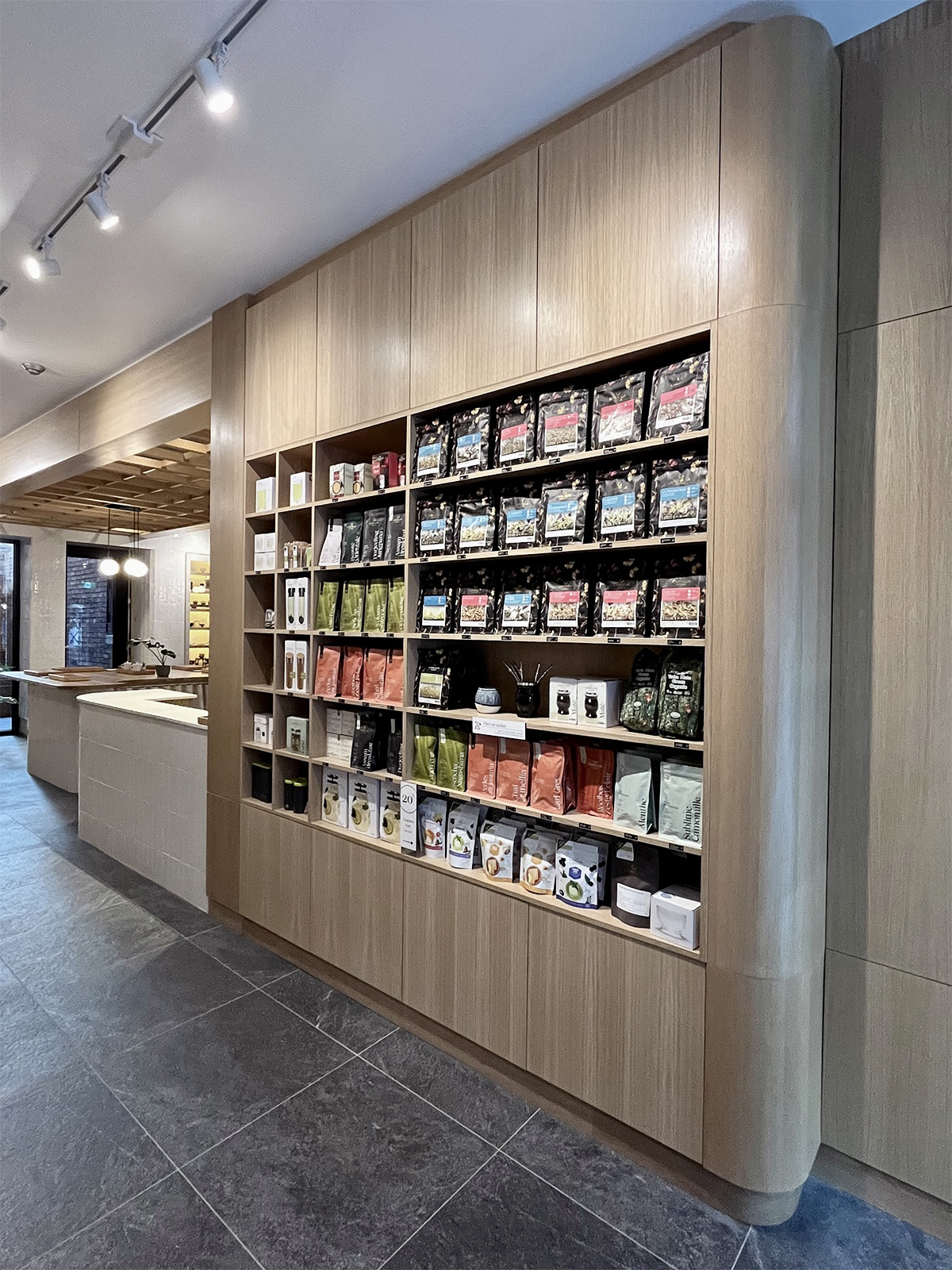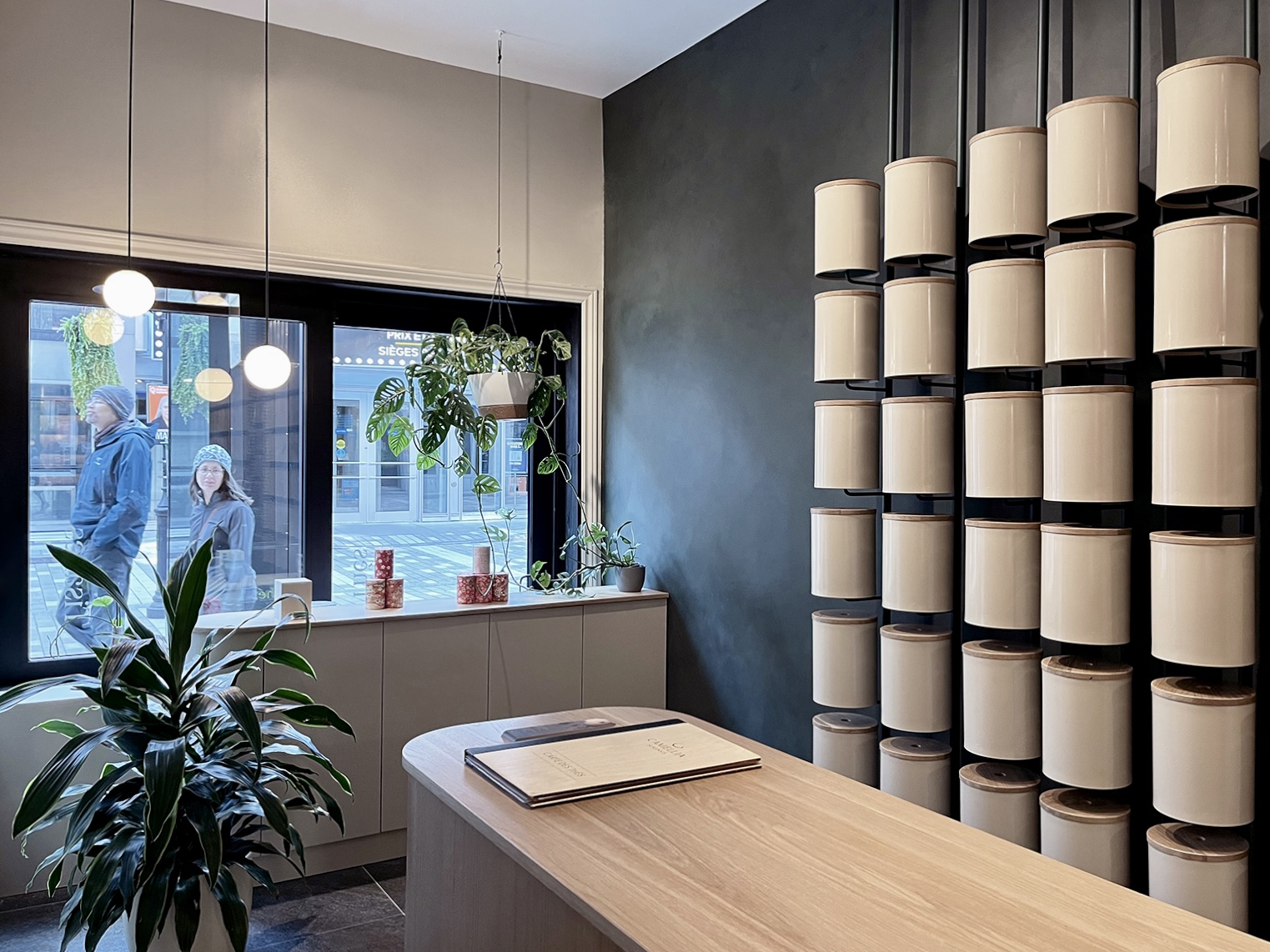The layout of the concept store was designed as an inviting experiential journey. As soon as you enter, the journey begins with a large-format photograph illustrating the artisanal Camellia Sinensis tea factory in a verdant Indian landscape. The picture is integrated into a floor-to-ceiling closed storage wall made of white oak. This wall presents a play of textures and soft shapes which contributes to the enveloping atmosphere of the space. Adjacent to the oak wall, the window is lined with a curved wood display where a few carefully selected objects are presented. Nearby, a section of wall with a green lime plaster finish is devoted to objects derived from the tea culture arranged in 3 storage modules. The first is a central podium-type storage unit both integrated into the wall and well planted on the ground, visually anchoring this section of the store. The other two, on either side of the central display, are storage units that seem to float. Cut though by brass rods, the white oak shelves and modules are lined with items available for purchase.
Between the entrance and the tea pot wall section, the central section of the store offers a break in the customer journey. It is an area that caters to the curious, to fine connoisseurs, and to palates in search of discoveries. In this space, interactions between customers and employees are frequent and varied. Whether through the tea workshops at the central island, at the bar for a tea to-go or in the cabinets of curiosities for a high-end equipment purchase, the customer is catered to by the team. Visually, the cabinets of curiosities, like jewel cases, catch the eye thanks to the integrated lighting and the white textured ceramic surrounding them. The latter, very present in the central area, generously reflects the light and contrasts with the warmth of the wood. Above the central island and bar, an oak ceiling canopy has been added to create an enveloping effect.
Present in all the brand’s boutiques, the wall of jars containing the Camellia Sinensis teas available for purchase has become emblematic. For the new store, this wall has been completely redesigned to make it a key element of the layout, a visual signature. Deployed behind the 3 service counters, this wall displays more than 200 pots, sometimes cream, sometimes copper, handmade in steel and solid white oak. Mounted on floor-to-ceiling copper rods, the pots are configured in a grid pattern that appears to float. Marked by the warmth of the wood and the softness of the curves that constitute them, the 3 service and cash counters are smooth at the front and lined with functional storage spaces at the back. Facing the counters and near the exit, a large full-height cabinet, also made of wood, presents a selection of products available for express purchase. The course ends with a final display, the entrance one mirror, exposing a few selected objects. Placed in the window, it offers a glimpse of the Camellia Sinensis universe.
CAMELLIA SINENSIS
— Quartier Latin
The layout of the concept store was designed as an inviting experiential journey. As soon as you enter, the journey begins with a large-format photograph illustrating the artisanal Camellia Sinensis tea factory in a verdant Indian landscape. The picture is integrated into a floor-to-ceiling closed storage wall made of white oak. This wall presents a play of textures and soft shapes which contributes to the enveloping atmosphere of the space. Adjacent to the oak wall, the window is lined with a curved wood display where a few carefully selected objects are presented. Nearby, a section of wall with a green lime plaster finish is devoted to objects derived from the tea culture arranged in 3 storage modules. The first is a central podium-type storage unit both integrated into the wall and well planted on the ground, visually anchoring this section of the store. The other two, on either side of the central display, are storage units that seem to float. Cut though by brass rods, the white oak shelves and modules are lined with items available for purchase.
Between the entrance and the tea pot wall section, the central section of the store offers a break in the customer journey. It is an area that caters to the curious, to fine connoisseurs, and to palates in search of discoveries. In this space, interactions between customers and employees are frequent and varied. Whether through the tea workshops at the central island, at the bar for a tea to-go or in the cabinets of curiosities for a high-end equipment purchase, the customer is catered to by the team. Visually, the cabinets of curiosities, like jewel cases, catch the eye thanks to the integrated lighting and the white textured ceramic surrounding them. The latter, very present in the central area, generously reflects the light and contrasts with the warmth of the wood. Above the central island and bar, an oak ceiling canopy has been added to create an enveloping effect.
Present in all the brand’s boutiques, the wall of jars containing the Camellia Sinensis teas available for purchase has become emblematic. For the new store, this wall has been completely redesigned to make it a key element of the layout, a visual signature. Deployed behind the 3 service counters, this wall displays more than 200 pots, sometimes cream, sometimes copper, handmade in steel and solid white oak. Mounted on floor-to-ceiling copper rods, the pots are configured in a grid pattern that appears to float. Marked by the warmth of the wood and the softness of the curves that constitute them, the 3 service and cash counters are smooth at the front and lined with functional storage spaces at the back. Facing the counters and near the exit, a large full-height cabinet, also made of wood, presents a selection of products available for express purchase. The course ends with a final display, the entrance one mirror, exposing a few selected objects. Placed in the window, it offers a glimpse of the Camellia Sinensis universe.


